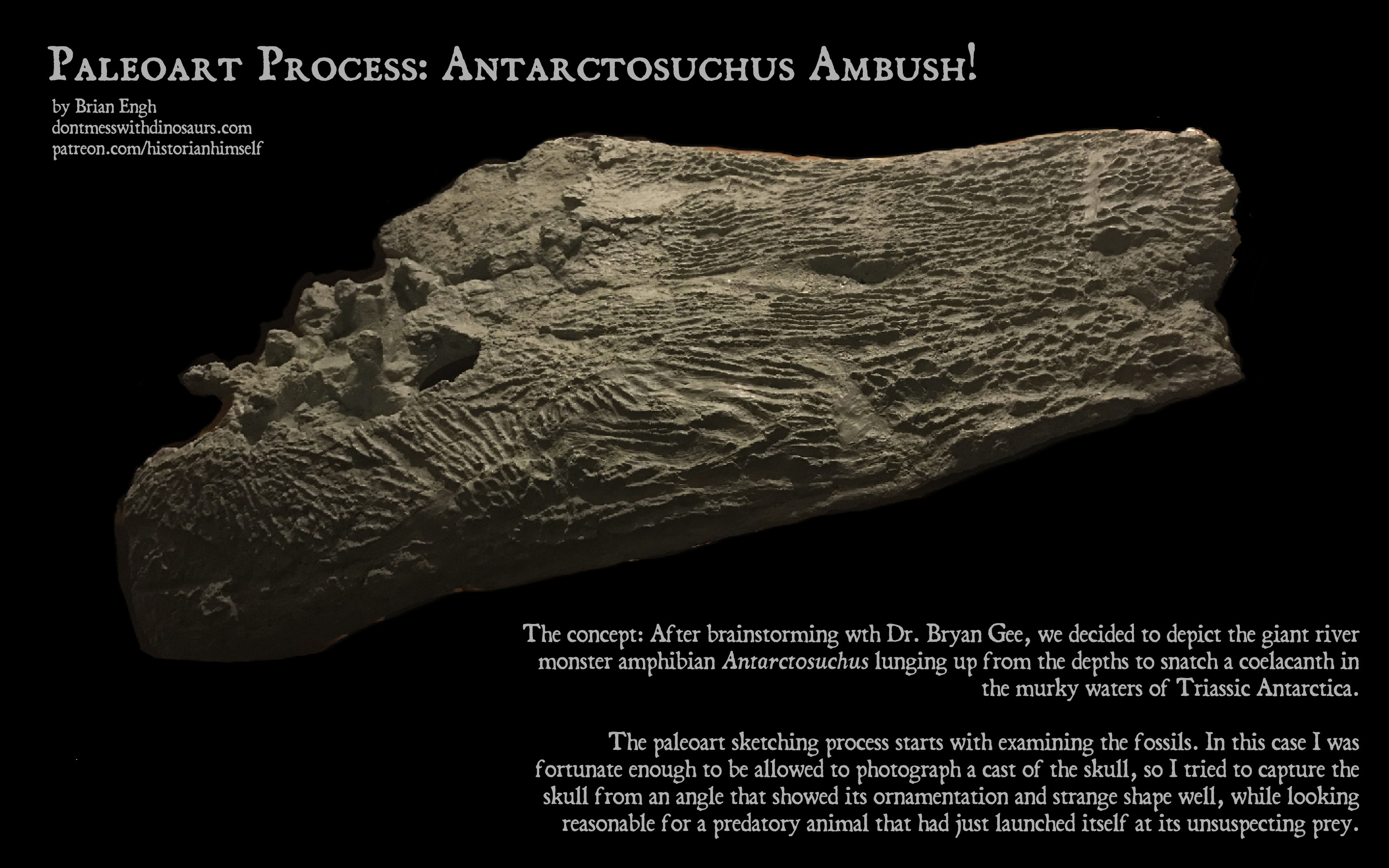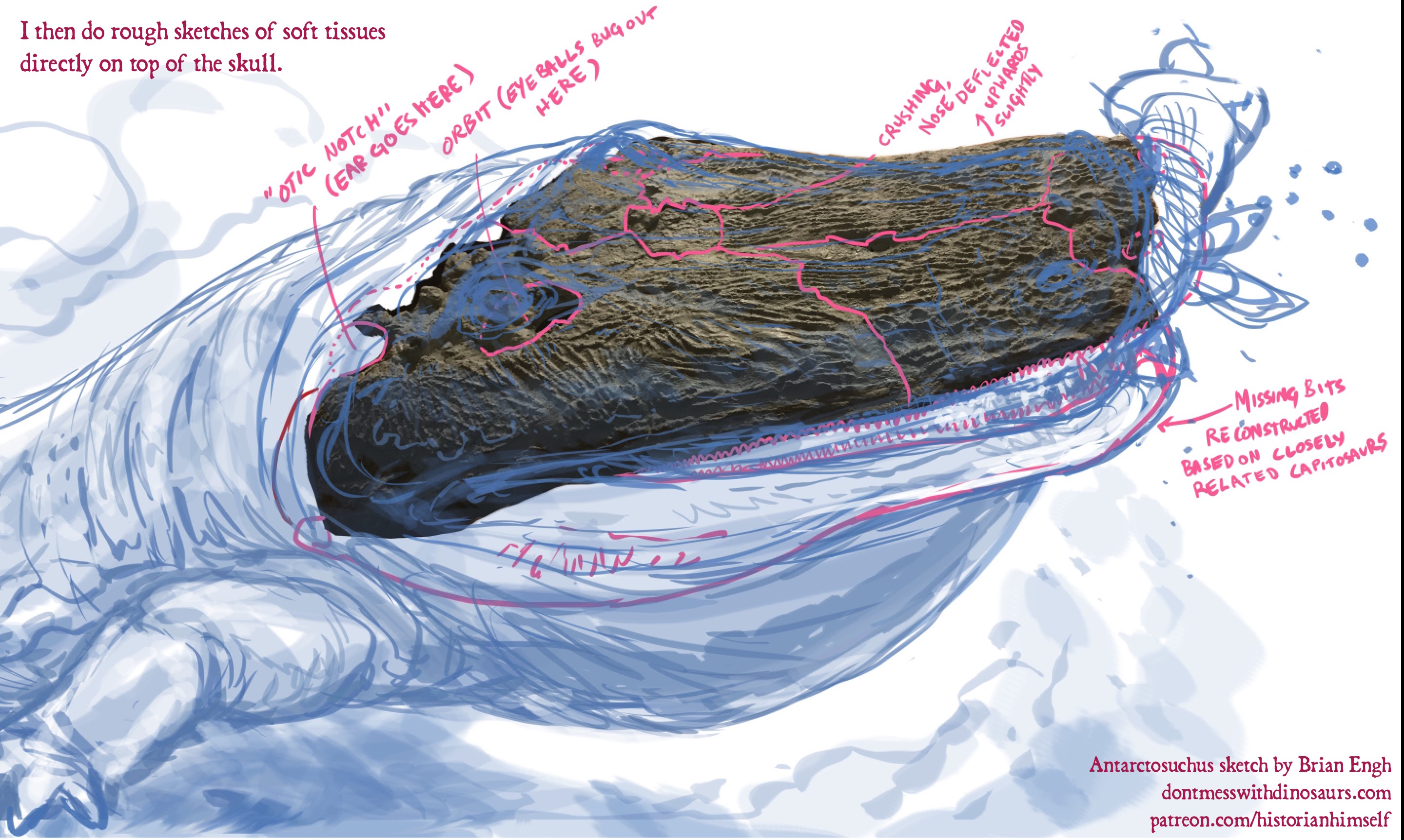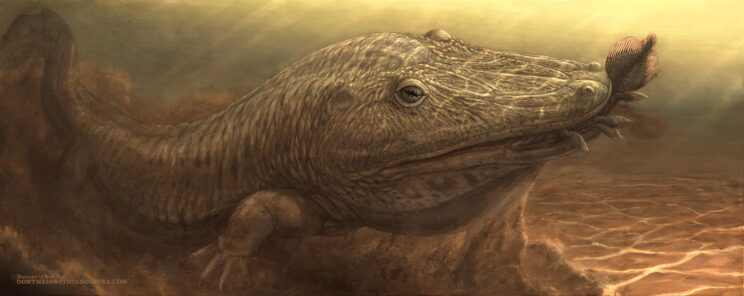Painting the Giant Triassic Amphibian Antarctosuchus
Here’s a video showing the traditional painting process of my latest approximately life-sized paleoart portrait: the giant Antarctic Capitosaur Antarctosuchus! Antarctosuchus was a member of a group of ancient amphibians called Temnospondyls, some of which grew to huge sizes and occupied the niches now occupied by alligators and crocodiles long before modern crocodilians had even evolved! Back in the Mesozoic Antarctica was much warmer than it is now – it was covered in temperate forests replete with ferns, mosses, horsetails and ginkophyte trees, and in that cool temperate environment where crocodilians couldn’t thrive Temnospondyls managed to remain dominant in that ecospace well into the Cretaceous!
This traditional painting was done as a part of a new exhibit at the Burke Museum in Seattle Washington, under the scientific guidance of Dr. Bryan Gee and Dr. Christian Sidor, who can be seen here proudly presenting their newly completed exhibit.
The exhibit focuses on the broad scale evolution of amphibians, with paleoart depictions of ancient forms to illustrate how long they’ve been around, and how massive they once were. In addition to my painting, the exhibit also features a sculpture of a much smaller ancient amphibian called Micropholis, expertly executed by Tyler Kiellor. A twitter thread detailing his paleoart sculpture process can be seen here! Micropholis paleoart process!
My paleoart process is covered to some degree in my video above, but I grabbed some explanatory screenshots of the set up process, with a bit of explanation.



My thanks go out to Dr. Gee and Dr. Sidor and the Burke Museum Exhibits staff for involving me in this exhibit project. I really like amphibians, and this was my first opportunity to illustrate a large Temnospondyl and I had a lot of fun practicing traditional painting. This behind the scenes paleoart process stuff was brought to you by my supporters on patreon. Thanks for the support yall.


